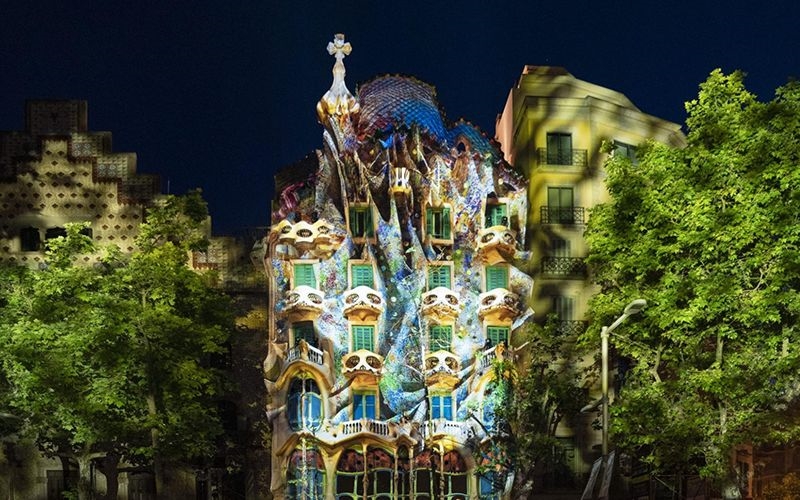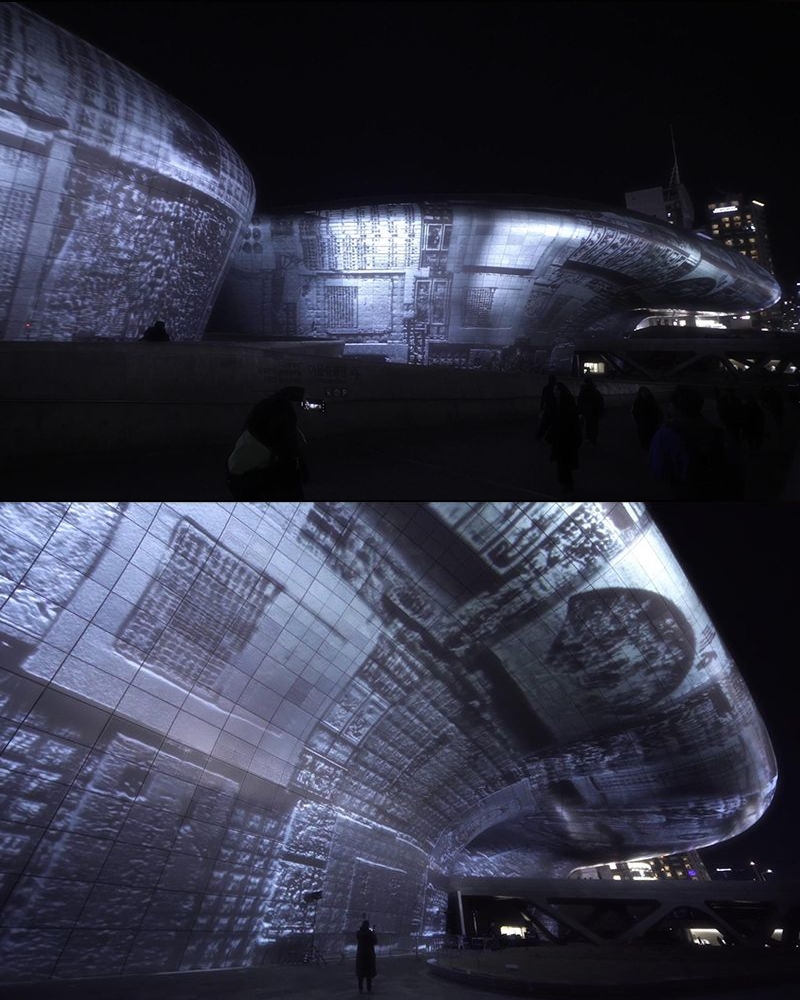- 한국어
- English
- 日本語
- 中文
- العربية
- Español
- Français
- Deutsch
- Pусский
- Tiếng Việt
- Indonesian
By Honorary Reporter Volga Serin Suleymanoglu from Turkiye (Turkey)
Photos = Refik Anadol Studio
Turkish American artist Refik Anadol is a global visionary in data visualization and artificial intelligence (AI) arts. He has earned world honors including several from Korea, and his work was recently celebrated at the Time 100 AI Impact Awards in the United Arab Emirates.
Lee Seung-min is head of design at Refik Anadol Studio in Los Angeles, bringing his expertise in generative art and sculptural installations to the forefront of Anadol's projects.
In this email interview conducted between Jan. 29 and March 19, Lee shares his journey in art, his approach to design and his collaborations with Anadol.

Refik Anadol's "Living Architecture: Casa Batllo 2022" on architect Antonio Gaudí’s 1906 house in Barcelona, Spain
Describe your journey in artistic development.
I've been drawn to making things since childhood, influenced by my tech-savvy father and film critic mother. This creative environment, combined with my growing interest in the intersection of technology and art, naturally led me to the Design Media Arts department of UCLA (University of California-Los Angeles).
After serving my mandatory military service in Korea, I joined Refik Anadol's studio as an intern. Over time, I grew into a key member, guiding both creative and technical aspects of our installations.
Name notable projects and the creative process at your job.
One of our most significant projects was "Living Architecture: Casa Batllo," where we transformed (architect Antoni) Gaudi's UNESCO World Heritage building in Barcelona with projected digital artwork. Under Refik's conceptual guidance on data and machine intelligence, I wove together advanced simulations, cultural research and local narratives.
We immersed ourselves in Gaudi's nature-inspired philosophies, translating them into fluid digital animations that enhanced the building's organic architecture, reimagining the building as an immersive, ocean-like experience. Launched during the pandemic in 2022, the project brought together nearly 50,000 people, achieving our vision of using technology to foster community connections.

"Seoul Haemong" (2019) at DDP Design Museum in Seoul
What about your exhibitions in Korea and public response to them?
"Seoul Haemong" transformed Dongdaemun Design Plaza (DDP) into a dynamic media canvas. The project honored the site's historical significance as Seoul's eastern gate during the Joseon Dynasty. Working with data scientists, we incorporated materials from Korean archives including historical maps and photographs, creating an AI-driven visualization that bridged past and present. The project's name was changed from "Machine Hallucination" to include the word haemong (dream interpretation), reflecting our commitment to connecting with the domestic audience.
Korean audiences have shown particular enthusiasm for our work as shown by our recent exhibition "Echoes of the Earth: Living Archive" at Futura Seoul. Visitors engaged deeply with both the technical aspects and environmental implications of our AI-driven approach. Strong attendance and participation in our workshops demonstrated Korea's readiness to embrace technological innovation in art.
What projects are you working on now and any message to aspiring artists?
We're working on Dataland, an immersive AI art museum in Los Angeles, and have upcoming collaborations in Korea on the themes of space and cognition. To aspiring artists, I emphasize that success stems from passion, continuous learning and strategic risk-taking.
msjeon22@korea.kr
*This article is written by a Korea.net Honorary Reporter. Our group of Honorary Reporters are from all around the world, and they share with Korea.net their love and passion for all things Korean.
Most popular
- 2 Egyptian sisters reflect on 10 years as Honorary Reporters
- Actor Bae Doona's first romcom in decade to hit theaters in May
- Korea Welcome Week for foreign tourists set from April 25-May 16
- Korea.net welcomes 2025 K-influencers, Honorary Reporters
- Mini-exhibition brings Korean culture to South London town
